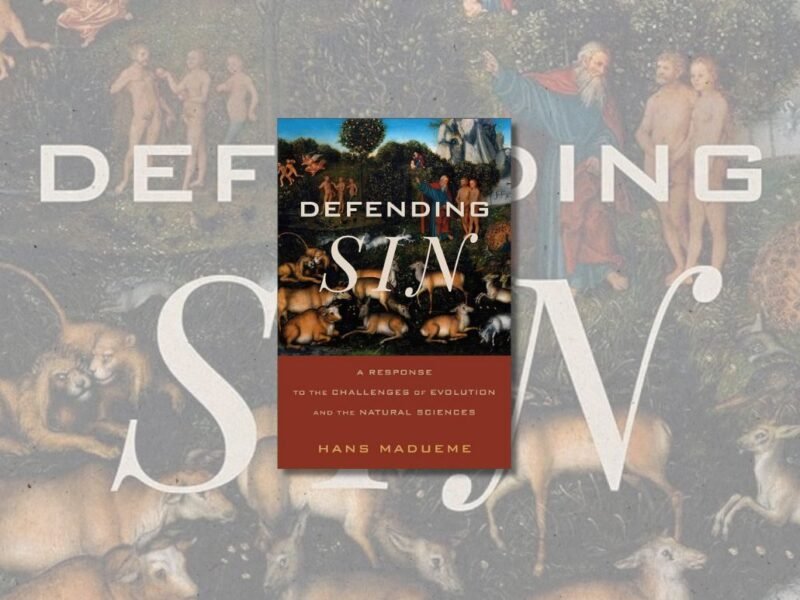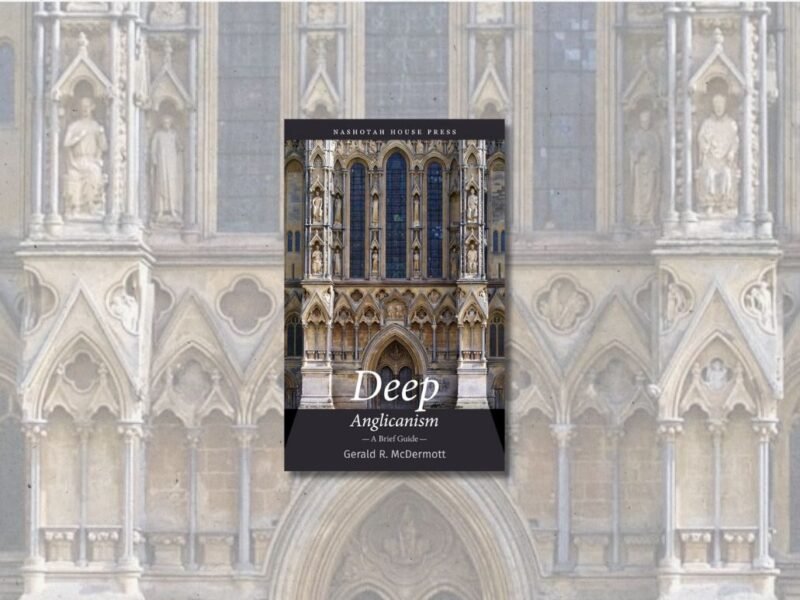“It is our responsibility to teach God’s truths to our children. They are full members of the church too.” This excerpt from the letter to the reader of The Nicene Creed: Illustrated and Instructed for Kids captures what is so important about books like this. Rev. Joey Fitzgerald has three children of his own and it is clear that he is not only concerned for their salvation but the salvation of children throughout the English and Spanish speaking world (the book is available in both languages).
One of the things I really appreciate about this book is that Fr. Fitzgerald opens not only with a letter, but with reasons for why one should care about the creeds and why our children need to know the faith. Many parents believe that raising their children in the faith is important, but it has become the norm in many circles to delegate that responsibility to “professionals.” While Sunday school teachers, small group leaders, and others may be important influences in the lives of our children, God does not charge these leaders with imparting the faith to our children. Rather, parents are admonished to be the primary instructors of their children “in the discipline and instruction of the Lord” (Eph 6:4; ESV). Fathers and mothers must recognize their God-given responsibility to raise their little boys and little girls into faithful Christians.
The structure of the book follows the Nicene Creed through its major sections, quoting them in large text and then expounding its meaning below. Interspersed throughout the book are images depicting the words of the Creed. Events like the birth, crucifixion, and ascension of Jesus are vibrantly displayed with accurate detail (for example, the image of the ascension is sure to include the marks in Jesus’ hands and feet). Another bit that I really appreciated is that the art includes children and adults of different races and cultures, which goes a long way to help children of different backgrounds to feel like they belong in the narrative of the gospel. At the end of the text, there is a helpful glossary of key terms and definitions to help parents and children define some of the language of the creed.
Scripture references are intermingled throughout the text to allow parents to follow up with ideas directly from the Bible. This feature not only emphasizes the idea that the words of the Creed are directly influenced by the words of Scripture but also encourages readers to actually open the Scriptures to investigate what they say. Most of these references are excellent, though one I found a bit puzzling. The sentence “Jesus is all God and he is all man!” is noted to come from Luke 24:39 and Philippians 3:21, passages which are references to the bodily resurrection (both of Jesus and humanity). Though these passages teach an important doctrine, why were they preferred to texts such as Matthew 1:23, John 1:14, or Philippians 2:5-11? This particular instance aside, these references are great for allowing parents to familiarize themselves with these ideas as they are presented in Scripture so that they can better teach their children.
Unfortunately, it is difficult for me to recommend this book. While there is much to love about it, there are two critical errors. The first error is the definition of the Trinity provided: “Even though there is only One God, he is made up of three separate persons” (20). I trust Fr. Fitzgerald’s intent was not to deny the unity of the Godhead, but phrases like “made up of three persons” evoke partialism. The first of the 39 Articles states that “there is but one living and true God, everlasting, without body, parts, or passions” (emphasis mine). God is not made up of three persons because the Godhead is not divisible. The Father, the Son, and the Spirit are indeed distinct from one another, and yet we do not say that God is made up of three persons, but rather that God is one in essence or being, eternally existing in three hypostases or persons (even “persons” can be a bit misleading, especially to the modern ear, though it is perfectly orthodox language).
Likewise, in the Keywords for Kids section of the book the text twice states that “God has three persons: God the Father, God the Son, and God the Holy Spirit” (32, 34). Again, I don’t think Fr. Fitzgerald is intending to teach that God possesses the persons of the Father, Son, and Spirit, but the language naturally tends to that reading. This kind of language serves to reinforce Sabellianism or Modalism, that is, the idea that God is not only one in essence, but one in person, and merely appears to be Father, Son, and Spirit to relate to creation in different modes. God does not possess persons but eternally exists as Father, Son, and Spirit. Changing these phrases to say, “Even though there is only one God, he has always existed as the Father, Son, and Spirit” and “The one God is three persons” would be in line with orthodox language and be less susceptible, as a result, of unintentionally teaching children heresy.
You might be wondering, “Why fuss over this? It’s a book for kids. No one expects children to be able to understand the ineffable mystery of the Godhead, much less adults.” True, but we do expect children and adults to learn how to properly talk about God because how we talk about God informs how we talk to him in prayer, how we praise him in worship, and how we proclaim him in evangelism. This is why we also must maintain high standards for the music we sing in church, the liturgy, the prayer book, and anything else we use to speak about or to God.
The goal of raising our children in the faith, at least at first, is not understanding; the goal is faith. My oldest son is two years old. When he was learning to speak our goal was not that he understood everything he said before he tried talking. It was actually through his talking that he learned what the meaning was, or at least what words are appropriate when. My goal at first was for him to learn to say the words. This required him to have faith in his mother and me, that if he used the same words with us, he would be understood. Then he picked up the patterns of usage to learn when we say things (we say “hello” when we see someone, we say “goodbye” when they leave). He took of a leap of faith to use them and delighted as he used them well and was able to communicate. Then he increased his complexity of understanding further by not only using the words at the right times but by using synonyms for them (“bye-bye” or “see you” can both be used to say goodbye, for example), demonstrating his faith in the means of communication as well as his understanding.
The same thing is true of training our children to be Christians; first they believe, then they understand (see Anselm’s brief discussion of this in his letter to Pope Urban II and Cur Deus Homo Book 1, Chapter 1). We invite catechumens to learn the words of the Creed through repetition in the liturgy and study of the Catechism, but it will take a lot of time to learn what they really mean. Fluency in the Scriptures goes a long way. Engaging in the life of the Church builds on that understanding. Studying the Fathers takes it even further. All of these facets of learning increase our understanding, but faith precedes understanding. It is only when we see with the eyes of faith, a gift from God, that we are able to grow in our contemplation of the mystery of faith. So, we lead with the words, not assuming understanding but trusting that the God who saved our children in baptism through our mediating faith will give them faith to trust in his Word that they might know him.
What’s most disappointing about this book is that getting our language right about how we talk about God is precisely the issue that made the councils of Nicaea and Constantinople so necessary. Not only was there concern about the teaching of Arius, but there was debate about how orthodox Christians ought to speak about God. Homoousias? Homoiousias? How do we talk about the relationship between Jesus and the Father? The language matters!
Concern about the language we use is not trivial. Jesus prayed to the Father, “This is eternal life, that they know you, the only true God, and Jesus Christ whom you have sent” (John 17:3). Knowing God is eternal life, which is why catechizing our children is so vital. Jesus warned of “false Christs” (Matt 24:24, Mark 13:22) and Paul cautioned that there is “another Jesus,” “a different gospel,” and “a different spirit” (2 Cor 11:4) than the one proclaimed by the Apostles. To put it perhaps more starkly, getting our language and theology right is what separates us from the Jehovah’s Witnesses and Latter-day Saints, who often misappropriate orthodox language while subverting it to mean completely different things. Are we teaching our children to believe in the Jesus of the Jehovah’s Witnesses – God’s first and greatest creation, but still just a mere creature? Are we teaching them to believe in the Trinity of Mormonism – three separate gods who are united in purpose and will? We need not only the right words, but the right understanding to ensure we’re teaching our children to trust in the true God and his gospel.
Finding resources like this to aid us parents in the daunting task of teaching our children the faith is not easy. Frankly, the task is made more difficult because of small, nuanced details that make up my concern. It would be very easy for a layperson to skim through this book, see that it is published by Anglican House Media, and assume it is teaching orthodox Christianity. Again, I believe that was the intent, but the actual text deviates in dangerous ways from how the Church actually teaches us to speak about God. Parents shouldn’t need a theology degree to be able to determine if books are determining the faith; they should be able to trust Christian publishers to thoroughly examine the works before they go to print. Publishers, particularly those associated with an ecclesiastical body, need to be scrupulous in editing and vetting books before publishing them in order to protect the sheep from dangerous teaching. My hope is that this book can be updated to reflect orthodox language and thereby become an excellent tool to instruct children in the Christian faith through the Nicene Creed.







'Book Review: The Nicene Creed' have 2 comments
June 2, 2020 @ 2:01 pm Tim
Thank you for this thorough reminder of the vital need for orthodox expression even if our orthodox understanding is still under development. For me personally, I need a periodic refresher and I find the Quicunque Vult well suited to the task. I have a Pentecostal/non-denominational evangelical/free church evangelical background so for the last couple of years the Prayer Book (1662 England/1962 Canada), Articles of Religion and Creeds have all been very educational and I am eternally grateful God led me to these historic treasures not to mention their immeasurable worth in imparting orthodoxy.
June 4, 2020 @ 7:59 am John
Thank you for this thoughtful review. One minor point of correction: Rev. Fitzgerald has four children; three sons and one adopted daughter.